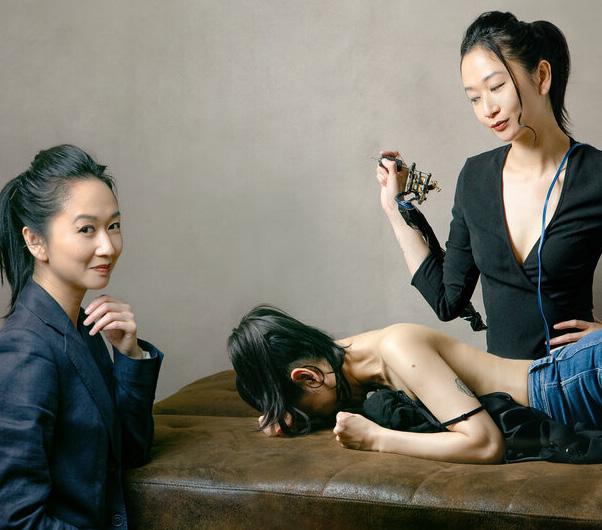
6 minute read
Me, Myself, and Eye
from IMTAC Issue No. 05
by imtacmag
by Loulou Von Spiel
Kayee C is no ordinary photographer. Born, raised and educated in HK, after acquiring her bachelor degree, she moved to Europe a few years ago where she still lives. A fluent French sapeaker, she lives in Paris, and works in an office during the day. Nothing in that description would ever indicate she would end up a prolific artist with a unique vision.
Advertisement
Once, when asked what kind of pictures she did, she responded “I take selfies.”
And that truly captures both her sense of humour and the subjects of her work, for she has one exclusive model featured in her photography: herself.
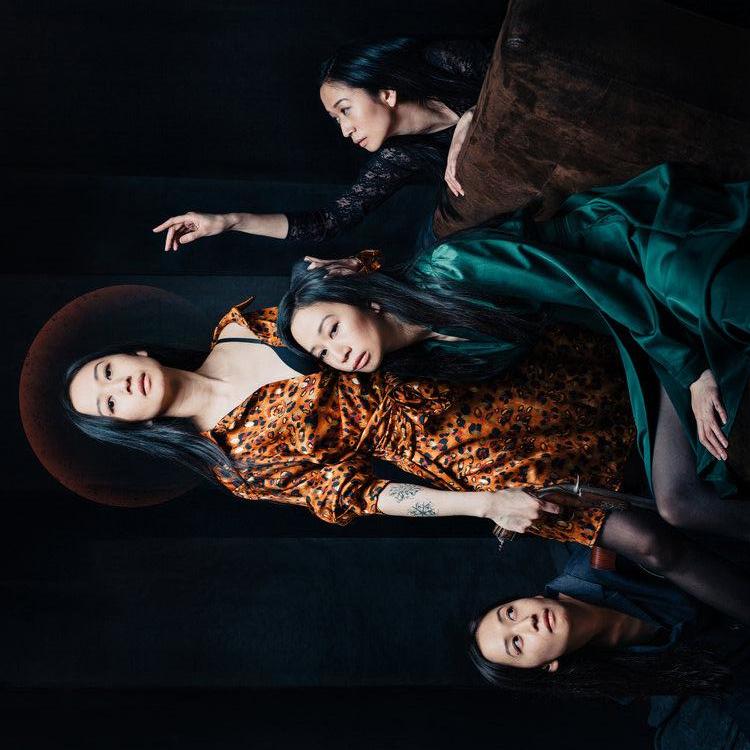
I Love Team Building 3 (2021)
She is an accidental photographer, her interest in the medium prompted in her early 30’s by her brother offering her his old camera. She diligently learned to use it and selftrained in Photoshop using YouTube tutorials to create the composite style she favours today. As for herself being her only muse, it did not arise from narcissistic tendencies but out of practicality: she can achieve the poses and expressions she wants without having to explain them, thus having the freedom to work at her own pace, anytime, anywhere. She describes it as a luxury “It allows you to go very deep. One has a lot of questions, looking at the finished work.” While proudly pursuing a corporate career, she creates after hours, whenever inspiration strikes. Unlike many artists, she is content with her “other” professional life and welcomes the “forced social interaction,” as much as the financial peace of mind it provides which enables her creativity and offers many topics to dissect.
Her photographic work can be encapsulated by some of the key concepts in her life: simplicity (she appreciates minimalism), introspection (always trying to “figure things out” and benefitting from therapy), and isolation (she is deaf in one ear and working on ways to deal with social anxiety) sprinkled with a wicked sense of humour. Identity and duality also feature heavily. She navigates her traumas to reach her own form of storytelling, and the process is as fascinating as the result:

The Taking of All of Us - 1
me, and I write them down. I like to work within frameworks of classical paintings, Caravaggio in particular. Ideas go back and forth, and I let stories cross over before I put them together. I question why those images come to me…I will discard anything I feel doesn’t belong to me. It is a filtering process”.
The photos themselves only come after she has sufficiently questioned her intentions. Very often her ideas do end up being transformed into artworks.
I ask whether she is concerned by others’ interpretation of such personal and controlled work , but she is aware the public will always highjack any artist’s intentions and therefore embraces the process.
Her photographs are drenched in Catholic imagery although she doesn’t see herself as religious, despite having a Christian education in HK. She refers me to a series of pictures


God confined 9 (2020)
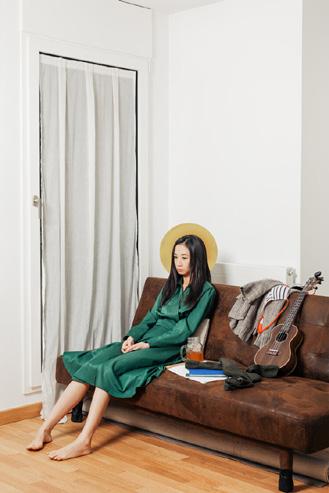
God confined 2 (2020)

Family Resemblance 2 (2020)
she did called “God confined”, where she imagined a creator God of no particular affiliation, dealing with lockdown, having given up on humanity. While the photos are playful, they are poignant in equal measure, “when people talk about God, they often talk about themselves. Humans are very limited, and that’s one of my work topics.”
Personal insights are also closely intertwined with her work. Recalling her upbringing conjures up painful memories of emotional denial within the family unit, unable to express her inner feelings, in particular the guilt related to the death of her twin brother at birth. She finally laid it all to rest through hypnotherapy, and using photography to channel her emotions has proven cathartic.
Her favourite own photo is inspired by Caravaggio ‘s painting ‘Salome with the Head of John the Baptist”. After researching the 2 versions of it, she came up with her own, and felt it fitted a narrative about transgenerational abuse. Triggered by a friend’s story of family abuse which seeped into all of his current close relationships, Kayee found inspiration for a series of photos. That cycle of emotional dysfunction resonated with her own experiences.
“When you are in an abusive relationship, people ask why don’t u leave? As if it was easy…Abusers don’t want to abuse dumb people, they want the capable and intelligent ones! I wanted this very important story to have a pictorial impact and be a concentration of what I have learned. It is ironically called “Family resemblance” because, we are all the same group of people doing harm to each other.”
When I first approached her, she was very enthusiastic about IMTAC’s purpose and said she would have
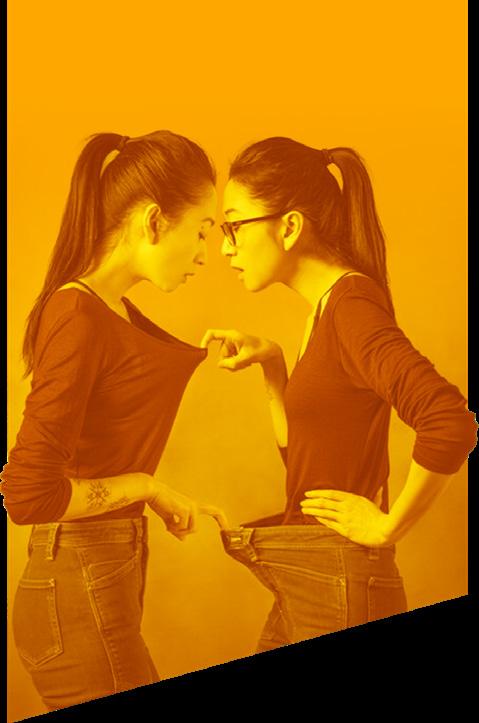
Sisters 9 (2020)
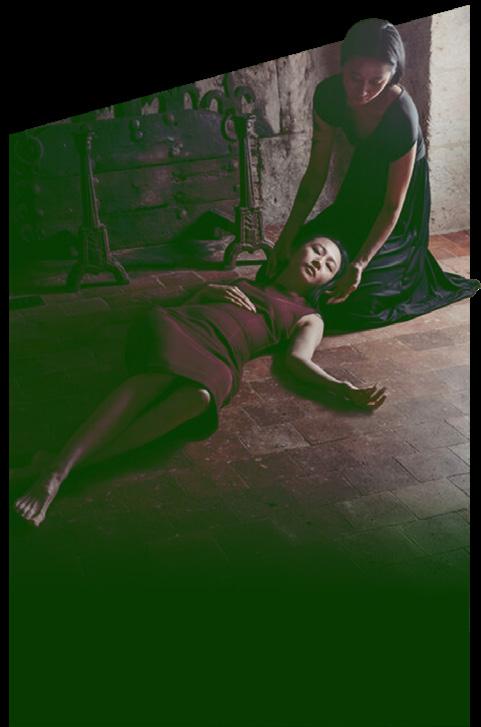
End of the party 6 (2020)
loved to come across such content when she was 14, adding that reading it was somewhat therapeutic to the damaged teen she was once. “As I get older, I feel a responsibility towards young women, especially as my work is all about manipulating images!”
Hence a recurring theme in a work being “the peer pressure women give each other, about looking a certain way, which is not very feminist because we teach each other to please the male gaze, and it’s agreeing to female oppression…” She sees it at play too often, “feminist or not, we have to get together as women…You don’t choose to be a feminist, the world pushes you to be one!”
Her artistic career is burgeoning at an impressive rate, but she finds having a career strategy impossible as a creative: with the achieved milestone of a recent fundraiser sale at Art Basel HK and a prominent HK gallery taking her on, she hopes for more collectors of her limited prints to come forth. Future subjects include a long standing series on “the inequality of power in relationships”, described as a departure from her current style, a “tale, a little surreal.”
As for her ambitions, she remains totally open: “I have an audience following the stories I tell and I want to grow with that community, that’s my wish I guess… but I don’t think too much about it”. She finds people’s focus on one’s career definition rather bizarre. "Are you an artist or do you 'still' hold a day job? Well, I am so many things!”. Indeed.
Kayee seems to have found the right balance between two worlds we always try to polarize. By making both of them part of who she is, she demonstrates how arbitrary and restrictive our visions of artists can be, and we should celebrate her for that!
Check out more of her original photos and portfolio at www.ckayee.com or on IG, @ckayee.photographer







